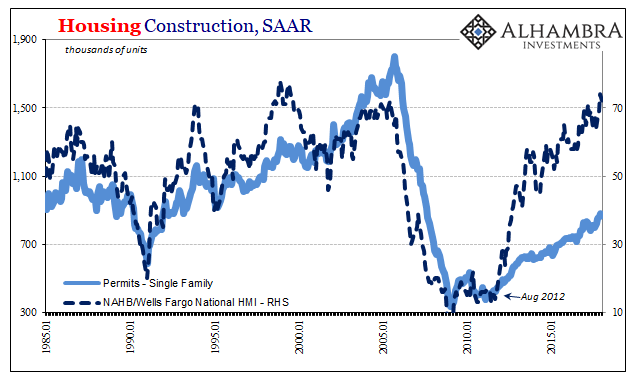New home sales were down sharply again in January 2018. For the second straight month, the level of purchase activity fell substantially despite what are otherwise always described as robust or even booming economic conditions. Like the sales of existing homes, the sales of newly constructed units should be both moving upward as well as being significantly more than stuck at this low level.
Construction and sale activity isn’t really down big in December and January, of course. What has happened is little more than the anticipated (for anyone not obviously biased by the boom narrative) drawdown in transactions following the aftermath of the storm aftermath.
Hurricanes Harvey and Irma produced undeniably large disruptions; some economic activity was delayed by a few months, pushed by weather into largely October and November (with some recorded in September, too). Absent the anomaly, whatever data series including both representing home sales was always going to revisit the prior trend.
Prior to them in August and September, the real estate market was unusually weak. Leading up to August, there was a noticeable deceleration and even contraction (resales) in home buying. In terms of existing, that had manifested in reduced inventory; the reluctance to sell one’s existing home for the concern over paying out a higher mortgage moving into the next one.
But if there was robust demand for housing across-the-board, such a bottleneck in the supply of existing homes for sale should have been addressed by home builders. After all, rising prices and robust demand is about as close to a sweet spot, theoretically, as they may ever see again. With little immediate downside risk, there is no bubble in single family residences, just these distortions, you would think construction activity and therefore the sale of new homes would be off the charts where sentiment is.

The problem is that new home sales continue to be just that; off the charts, only in the other direction. Despite seven years of rising sales volume, the level remains underneath the historical range (adjusted for population growth).













Leave A Comment